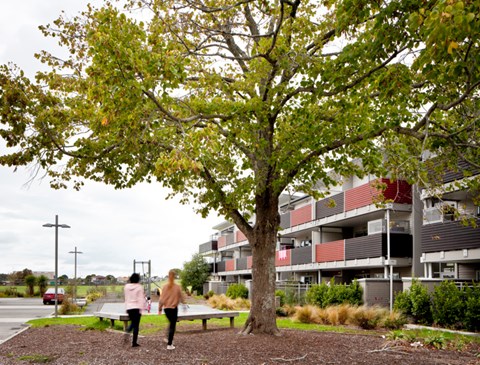Auckland Council approves urban forest strategy
Auckland’s urban ngahere comprises all trees, other vegetation and green roofs in existing and future urban areas.
“The approved strategy builds on from these initiatives and provides an important tool to ensure we are all working towards the same common goal," says the committee's chair, Councillor Penny Hulse.
“Most important, it provides a vision and mechanisms to protect and grow the benefits of our urban ngahere for future generations.
“A key target of the strategy is to increase canopy cover across Auckland’s urban area up to 30 per cent, with no local board areas less than 15 per cent.”
Planting projects underway
Auckland is already engaged in a number of planting initiatives via local boards, iwi, schools, service and social sector groups, private entities, farmers, the council group, New Zealand Transport Association and developers. Mayor Phil Goff’s Million Trees project will further green Auckland by planting 1 million predominantly native trees and shrubs over three years.
As part of the implementation framework, 18 high-level actions have been identified grouped under three themes:
- Knowing – having better data and understanding
- Growing – increasing canopy and leveraging partnerships
- Protecting – direct and indirect ways to better protect trees.
What is Auckland’s urban ngahere?
Auckland’s urban ngahere is defined as the network of all trees, other vegetation and green roofs – both native and naturalised – in existing and future urban areas. It includes trees and shrubs in road corridors, parks and open spaces, green assets used for stormwater management, community gardens, green walls and roofs, and trees and plants in the gardens of private properties.
The urban ngahere, like the pōhutukawa trees fringing Auckland’s coastline, are an important part of Auckland’s identity and natural heritage. Trees are also important to our heritage places and areas, such as Albert Park, Western Park and Myers Park. The ngahere form an important part of Auckland’s cultural heritage, and represent landing places of waka (canoe) and birth whenua (to Māori, it is customary to bury the whenua or placenta in the earth, to return it to the land).
It is important to recognise the urban ngahere as more than just trees and shrubs: it captures the interconnected whakapapa (genealogy) of all living things to the wider ecosystem, including the water, soil, air and sunlight that support it.
Increasing threats to green spaces
Auckland Council’s Chief Sustainability Officer, John Mauro, says that as Auckland grows, our natural environment is put under greater pressure.
“Some of these threats include population growth and urbanisation, ongoing challenges with weed and pest control, diseases such as kauri dieback and myrtle rust and the potential future challenges caused by climate change," he says.
“Creating and protecting urban trees and vegetation – our urban ngahere – is therefore becoming increasingly essential to counteract the pressures and impacts of these changes to maintain a quality, healthy and people-friendly urban environment.”
What are the benefits of a healthy urban ngahere?
A healthy urban ngahere is critical for a city to achieve and enhance environmental, economic and social outcomes. The benefits of urban trees include:
- improved water and air quality
- enhanced stormwater management
- enhanced biodiversity
- better health and wellbeing for people
- removal of carbon from the atmosphere
- reduced urban heat island effect
- reduced energy costs
- creation of cultural connections to place and history
- opportunities for nature-based recreation
Next steps
At last week’s meeting, staff also presented an implementation framework of the strategy which includes collaboration, funding and partnerships, area-specific implementation and 18 high-level actions. As one of the next steps, staff will do further work on implementation, opportunities and costs to report back to the committee.
Read the urban ngahere strategy here (item 12).
ARTICLE & IMAGE SOURCE: Our Auckland - Auckland Council





